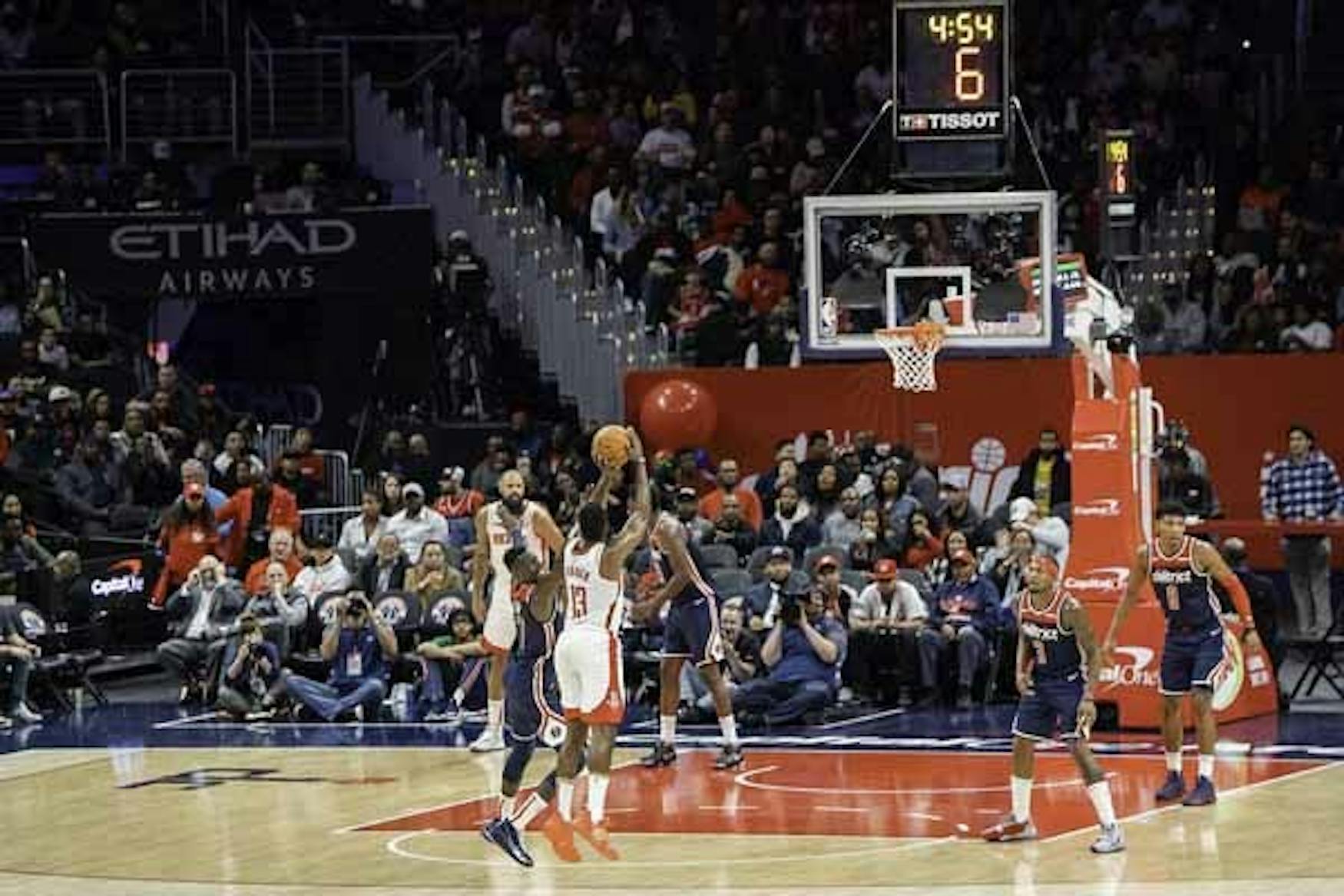The NBA’s new foul rules and how they are changing the game
The NBA introduces new rules to target foul-baiting in an attempt to discourage players from “flopping.”
Prior to the start of the 2021-2022 NBA season, the league enacted new rules targeting abnormal movement by the offensive player in an attempt to draw fouls. Before this season, foul rules were generally designed to benefit and protect the offensive player, as excessive contact by a defender with a shooter could result in the player landing on the defender’s feet as they come down from a jump shot, which has resulted in severe ankle and foot injuries. Most notably, in the 2017 Western Conference Finals between the San Antonio Spurs and the Golden State Warriors, Kawhi Leonard landed on Zaza Pachulia’s foot as he was coming down from a shot, which caused him to aggravate an already injured ankle. Kawhi’s injury, among others, prompted the league to take action and provided strong initiative to protect players while implementing various measures to dissuade defenders from having too much contact with a shooter.
However, many players soon began to take advantage of these measures. Because being fouled while taking a jump shot always results in at least one free throw and at most three, there is great incentive for players to bait fouls and get easy points from free throws. While one made free throw only results in one point, when players such as James Harden and Trae Young shoot 10-plus free throws a game and have a conversion rate above 85%, the points start to add up. Although being able to entice contact and draw fouls is a genuine skill that many players start practicing from their youth, when players over-dramatize contact in the hope of scoring free points, drawing fouls becomes frowned upon. Moreover, free throws disrupt the flow of the game and lead to excessive stoppages and breaks in play; the games at points become unbearable to watch. In light of these developments, the NBA has changed their stance on “foul-baiting” by instructing referees to be more lenient towards contact with the offensive player and discourages calling fouls on “abnormal moves” such as jumping into a defender’s body as they leave their shooting motion.
With some players in the 2020-2021 season having almost a third to half of their points come from free throws, these new rules have taken a toll on their scoring numbers. Furthermore, as defenders can afford to be more aggressive guarding these players, scoring in general has seen some reduction especially from beyond the three point line where the most egregious foul-baiting attempts used to take place.
These foul-baiting attempts should also help offensive players play safer, as the whole reason behind calling fouls on shooters is to prevent them from getting injured, but as players are voluntarily throwing themselves onto people for a foul, there are heightened levels of risk. There are instances where players intentionally jump onto the person guarding them in the hopes of drawing a foul only to land on their foot and roll their ankle.
These rule changes are also a product of the international basketball played at the Olympics governed by the International Basketball Federation, which is independent of the NBA. FIBA rules are less stringent compared to the NBA and encourage a more physical play style. This difference, along with other factors, resulted in Team USA having a slow start to their international campaign although both the Men’s and Women’s teams wound up winning gold at the games. Fans expressed interest in the more physical style of play with less interruptions, which the NBA certainly caught eye of and then implemented into their league.
We have yet to see the long term effects of the rule change. So far, however, the game has become much smoother with the reduction of pauses and easier to watch as less players attempt to commit egregious attempts at drawing fouls. While some players may find loopholes in the future and referees may become more tolerant and lenient, for now the game has made another positive evolution. Although some may miss the moments when players went on to score 60 points or so, we are surely going to see some amazing performances even without the aid of free throws.



Please note All comments are eligible for publication in The Justice.